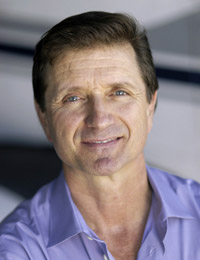License to learn: That's how real it feels
Flight training and simulators

At this year’s AirVenture, I had a chance to spend a little time with Jerry Gregoire, chairman of Redbird Flight Simulators. Jerry is an enthusiastic proponent of using simulators for flight training, and Redbird’s machines are certainly something to be excited about. I spent a little time in the MCX simulator and came away convinced of its potential utility at helping new pilots build basic flying skills.
Redbird has the right idea and they’ve put their money where their induction system is by offering a guaranteed, one-price, three-week flight training program at the company’s San Marcos, Texas, facility. Redbird’s syllabus makes generous use of its simulators during flight training, and offers students unlimited use of these devices for solo practice during students’ nonscheduled training hours. And just to be clear, I don’t sell Redbird simulators but I’m not above putting one in my garage someday (once I have a garage long enough for takeoffs and landings). That’s how real it feels.
I’ve always been a big supporter of using flight simulators in primary and advanced training. My enthusiasm goes all the way back to the first time I visited Charlie Gress’ Link simulator school in Santa Monica, California, and saw him bang on the side of a rotating Link simulator because his student wasn’t holding altitude. Slap! Slap! “Get that nose up, dangit! Don’t make me come in there.” Charlie was an old-school, dynamic teacher. When his student departed, Charlie offered me an intro flight and I hopped inside. I couldn’t have been more excited about my first simulator session—despite all the banging going on.
As a new flight instructor I used early model ATC 510 desktop simulators with my instrument students. These devices were a hoot. They looked as if the instrument panel and control column of a small Cessna was jacked (removed without permission), tidied up, and placed on a table in a flight school. They were great trainers, despite the challenge of finding someone to do maintenance on them. When an instrument went wacky, you often had to hit it with your shoe to make it work correctly—just as you’d do in a rental airplane. That’s how real it was.
Desktop simulators can be used to build some very important pilot VFR and IFR flying skills. But when a simulator offers three degrees of motion and 200 degrees of wraparound vision, a good instructor gains the ability to actually introduce and develop—to a large degree—stick-and-rudder skills. This has always been the greatest limitation of simulators used in primary flight training. In the Redbird full-motion sim, you can see the wing tips, which means you can approximate the wing’s chord line in relation to environmental movement. That’s another way of saying that you can actually see the wing’s angle of attack, which is essential for learning stick-and-rudder skills.
Your rear end can also feel what it’s like to fly uncoordinated in this machine. I made it a point to perform several coordination rolls just to see if a pilot could sense proper rudder application by the absence of adverse yaw and uneven force distribution on his derriere. In my opinion, it is as easy to discern between coordinated and uncoordinated flight in this simulator as it is in the actual airplane. These and many other sensations are fundamental to becoming a good stick-and-rudder pilot.
Of course, you need a real airplane to fully develop stick-and-rudder skills and become a competent pilot. Famous martial artist Bruce Lee made this point in a movie years ago when an assailant demonstrated an ability to break a board with his bare hands. Lee responded by saying, “Boards don’t hit back.” Point made. When you combine airplanes, a good simulator, and a good instructor, you’ve got another winning combination.
From what I’ve read on my Facebook page, it appears that those who’ve trained at Redbird’s facility—as well as those who are training in Redbird simulators in general—are getting a lot of simulation bang for their buck. This is good news for aviation on a number of levels. It means you can train for a private pilot certificate when the weather is poor, at less cost, and in an environment that’s conducive to learning.
As a final note, Redbird’s MCX is sort of the Optimus Prime of simulators. You certainly don’t want to slap this thing on the side, mainly because I think it might hit back. That’s how real it feels.
Visit the author’s blog.


